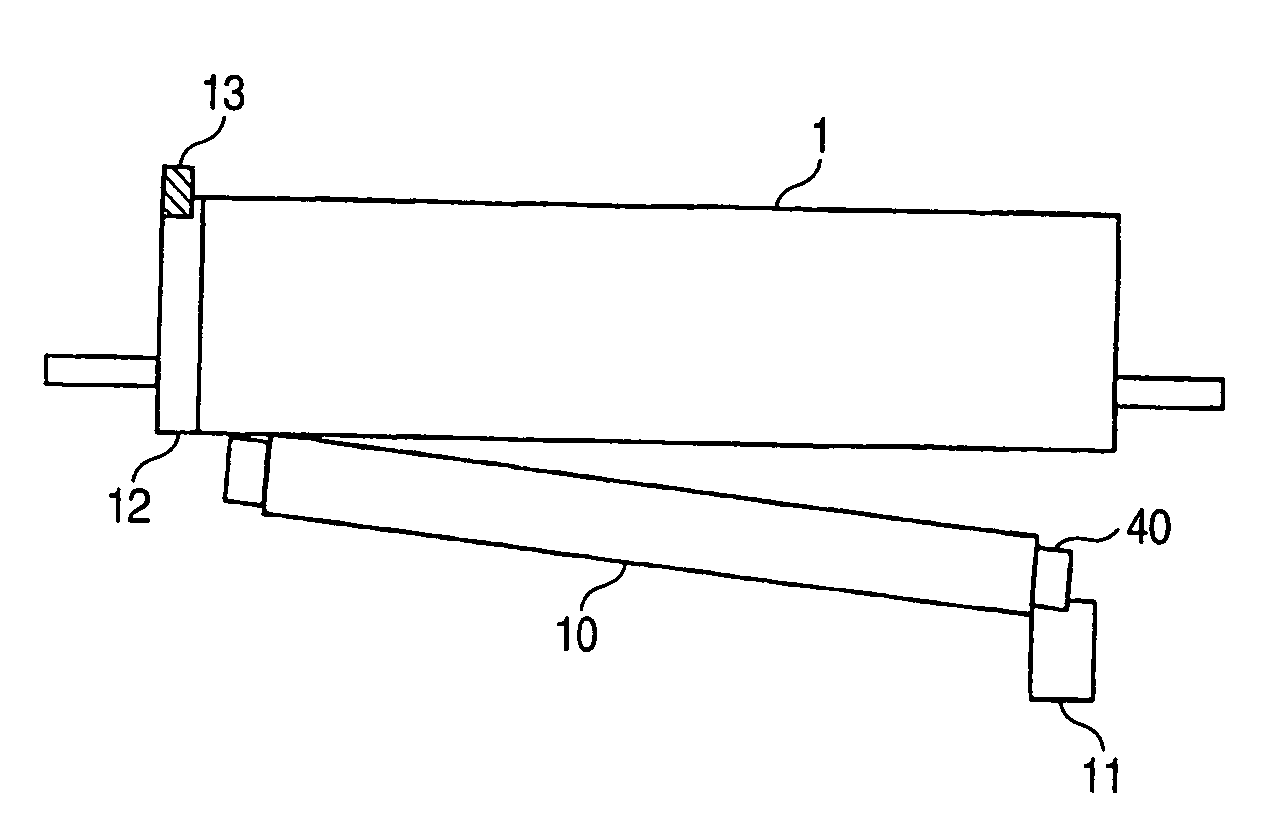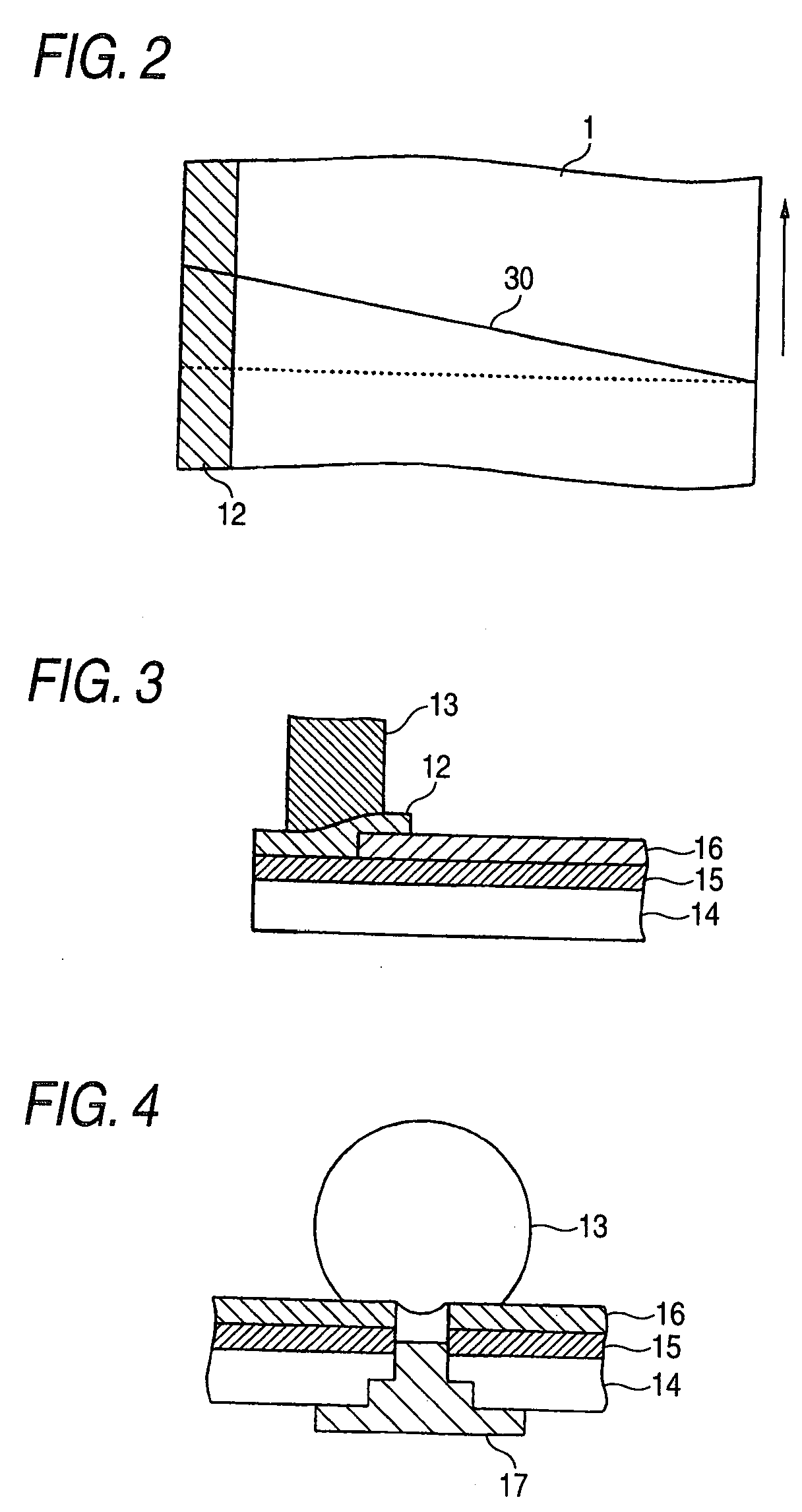Image forming apparatus having a medium transporting belt formed in an endless shape and having a first and second region
a technology of transporting belt and image carrier, which is applied in the direction of electrographic process apparatus, instruments, optics, etc., can solve the problems of oblique seam extending direction that does not consider, transfer failure, and welding becomes unstable according to the direction
- Summary
- Abstract
- Description
- Claims
- Application Information
AI Technical Summary
Benefits of technology
Problems solved by technology
Method used
Image
Examples
example 1
[0137]As an intermediate transfer belt, a metal layer was vapor-deposited on a substrate of a PET (polyethyleneterephthalate) film having a thickness of 130 μm, and a coating dispersed with a conductive material having medium resistance was coated on the metal layer. A projection was formed at a side edge of the belt as a reference position thereof. The projection was detected by a transmissive optical sensor. An interval between a light emitter and a light receiver was 5 mm. The belt was stretched by a drive roller and a plurality of driven rollers.
[0138]In stopping the belt, the belt was controlled to stop such that the projection was deviated from portions wrapping on the rollers. When the belt was stopped for a long time period under the state, unevenness was produced at portions of the belt crept by the rollers. Since the projection was situated so as to avoid the portions wrapping on the rollers, any deformation was not formed on the projection. Using this belt, no damage was ...
example 2
[0139]As an intermediate transfer belt, a substrate of ETFT (ethylenetetrafluoroethylene copolymer) having a thickness of 150 μm dispersed with carbon was used. A mark was painted on a side end portion of the belt as the reference position. A reflective sensor was disposed at a distance of 3 mm from a surface of the belt. The belt was stretched by a drive roller and a plurality of driven rollers.
[0140]In stopping the belt, the belt was controlled to stop such that the projection was deviated from portions wrapping on the rollers. When the belt was stopped for a long time period under the state, unevenness was produced at portions of the belt crept by the rollers. Since the mark was situated so as to avoid the portions wrapping on the rollers, any deformation was not formed on and around the mark. Using this belt, no damage was occurred on the position sensor, no image offset was occurred on the intermediate transfer belt (falls within a range of 10 μm or less).
PUM
 Login to View More
Login to View More Abstract
Description
Claims
Application Information
 Login to View More
Login to View More - R&D
- Intellectual Property
- Life Sciences
- Materials
- Tech Scout
- Unparalleled Data Quality
- Higher Quality Content
- 60% Fewer Hallucinations
Browse by: Latest US Patents, China's latest patents, Technical Efficacy Thesaurus, Application Domain, Technology Topic, Popular Technical Reports.
© 2025 PatSnap. All rights reserved.Legal|Privacy policy|Modern Slavery Act Transparency Statement|Sitemap|About US| Contact US: help@patsnap.com



